Healthy Communities Collaborative Network
HRSA grant-funded Health Center Controlled Network supporting Health IT
About HCCN
The Arizona Alliance for Community Health Centers (the Alliance) is a recipient of a Health Center Controlled Network (HCCN) grant through the Health Resources and Services Administration. The purpose of the HCCN program is to help Community Health Centers improve quality of care and patient safety by using health information technology (HIT) to reduce costs and improve care coordination.
Through our HCCN, Healthy Communities Collaborative Network, we partner with the Nevada Primary Care Association to provide specialized training and technical assistance focused on:
- Supporting patients and families’ participation in their healthcare through expanded use of integrated digital health tools;
- Formally defined health information and technology policies and practices that advance security to protect individual privacy and organizational access;
- Using patient level data on social risk factors to support patient care plans for coordinated, effective interventions;
- Systems and staff aligned with submitting disaggregated, patient- level data via UDS+;
- Integrating clinical information with data from clinical and nonclinical sources across the health care continuum to optimize care coordination and workflows;
- Data strategies, such as use of predictive analytics with data visualization, to support performance improvement and value-based care activities;
- Supporting providers and staff in achieving and maintaining proficiency in the use of digital health tools;
- Improving health IT usability and adoption by providers, staff, and patients;
- Improving the data capture, utilization, analysis, and visualization of data to identify gaps in care and health disparities; and
- Utilizing virtual care platform, technologies, and analytics systems to improve healthcare delivery, education, and/or health information services to patients.
The Arizona Alliance for Community Health Centers (the Alliance) is a recipient of a Health Center Controlled Network (HCCN) grant through the Health Resources and Services Administration. The purpose of the HCCN program is to help Community Health Centers improve quality of care and patient safety by using health information technology (HIT) to reduce costs and improve care coordination.

A Health Center Controlled Network including federally qualified health centers and look-alikes that agree to work with CVN and each other to jointly address operational and clinical challenges present in their efforts to leverage Health Information Technology (Health IT) to advance their participation in value-based care.
Through our HCCN, Healthy Communities Collaborative Network, we partner with the Nevada Primary Care Association to provide specialized training and technical assistance focused on:
- Supporting patients and families’ participation in their healthcare through expanded use of integrated digital health tools;
- Formally defined health information and technology policies and practices that advance security to protect individual privacy and organizational access;
- Using patient level data on social risk factors to support patient care plans for coordinated, effective interventions;
- Systems and staff aligned with submitting disaggregated, patient- level data via UDS+;
- Integrating clinical information with data from clinical and nonclinical sources across the health care continuum to optimize care coordination and workflows;
- Data strategies, such as use of predictive analytics with data visualization, to support performance improvement and value-based
care activities; - Supporting providers and staff in achieving and maintaining proficiency in the use of digital health tools;
- Improving health IT usability and adoption by providers, staff, and patients;
- Improving the data capture, utilization, analysis, and visualization of data to identify gaps in care and health disparities; and
- Utilizing virtual care platform, technologies, and analytics systems to improve healthcare delivery, education, and/or health information services to patients.
